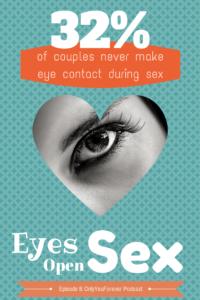
Gaslighting Explained: The Ultimate Guide to What It Is, Why It Happens, and How to Stop It
Key Takeaways
- Gaslighting is a form of psychological abuse that makes victims question their memory, perception, and sanity through deliberate manipulation
- The term is originally derived from the 1938 play “Gas Light” where a husband manipulates his wealthy wife into doubting her reality as he attempts to steal her generational wealth
- Common tactics include lying, denial, minimizing feelings, blame-shifting, and rewriting history to gain power and control
- Victims often experience anxiety, depression, low self-esteem, and difficulty trusting themselves or others
- Recovery involves seeking support, documenting incidents, trusting your instincts, and potentially leaving the abusive relationship
If you’ve ever found yourself constantly second guessing your own memories, wondering if you’re “too sensitive,” or feeling like you’re losing your grip on reality in a relationship, you may be experiencing gaslighting. This insidious form of emotional abuse affects millions of people, leaving them confused, isolated, and questioning their own sanity. It is important to remember that gaslighting is not the victim’s fault; the abusive behavior is a choice made by the gaslighter.
Be reassured: you’re not imagining things, and you’re not alone. Gaslighting is a real, documented form of psychological abuse that mental health professionals recognize as deeply harmful. Understanding what gaslighting involves, why people do it, and how to protect yourself is the first step toward reclaiming your reality and your life.
What is Gaslighting?
Gaslighting is a type of emotional abuse where one person manipulates another into doubting their own memory, perception, and sanity. This deliberate psychological manipulation causes confusion, self-doubt, and increases the victim’s reliance on the abuser. Unlike simple lying or disagreement, gaslighting specifically targets your sense of reality itself. As a result, victims often feel unsure about their own perceptions and reality, further deepening their confusion and vulnerability. The longer gaslighting continues, the more a victim may start to rely on the gaslighter to define reality.
The term gaslighting comes from the 1938 play “Angel Street” (later called “Gas Light”) and the 1944 Alfred Hitchcock film adaptation. In the story, a husband systematically manipulates his wife’s environment—dimming the gas lights in their home while insisting she’s only imagining the changes. He denies her perceptions so persistently that she begins to believe she’s losing her mind. This is a classic example of a gaslighter gaslighting their victim, using manipulative tactics to make her question her reality. This deliberate campaign to undermine someone’s grip on reality gave us the word gaslighting.
The distinction between gaslighting and other forms of manipulation or lying is crucial. While all relationships involve disagreement and (unfortunately!) even some lying, gaslighting specifically targets one’s sense of reality. It’s not about winning an argument—it’s about making you doubt your own perceptions, memories, and mental stability to gain control. Gaslighters may even suggest you have a bad memory, using phrases like “You’re crazy – that never happened,” to discredit your experiences and undermine your credibility.
Gaslighting can occur in romantic relationships, families, workplaces, and friendships. The National Domestic Violence Hotline reports that 74% of women seeking domestic violence support have experienced gaslighting, making it one of the most common forms of psychological abuse. Women and marginalized groups are more likely to experience gaslighting due to systemic power imbalances.
Types of Gaslighting
Intimate partner gaslighting is the most recognized form, occurring in romantic relationships where an abusive partner systematically undermines the other’s reality. This might involve denying conversations, rewriting relationship history, or making their partner feel “crazy” for having normal emotional reactions.
Workplace gaslighting involves colleagues or supervisors undermining your credibility, denying conversations about work assignments, or dismissing your concerns about workplace issues. This form of abuse often targets competent employees to maintain power structures or avoid accountability.
Parental gaslighting occurs when caregivers manipulate children’s reality and emotions, denying abusive incidents or rewriting family history. Children who experience this form of abuse often struggle with self-trust and healthy relationship patterns into adulthood.
Racial gaslighting involves denying or minimizing experiences of bias and discrimination. This might include dismissing someone’s experiences of racism as “oversensitivity” or claiming that racial bias doesn’t exist in certain situations. Racial gaslighting discredits the experiences of an entire racial or ethnic group to undermine their credibility.
Medical gaslighting happens when healthcare providers dismiss patients’ symptoms or concerns, particularly affecting women and minorities who report pain or unusual symptoms. This can lead to delayed diagnoses and serious health consequences.
These patterns are examples of an abusive person’s behavior, which can occur in any relationship type.
Psychology of the Gaslighter
Understanding why people gaslight others reveals a disturbing pattern of power-seeking behavior rooted in deep psychological issues. Gaslighters are primarily motivated by an overwhelming need for power, control, and dominance over others. Manipulative people often use gaslighting as a tactic to achieve their goals. Their actions stem from a fundamental inability to handle accountability, criticism, or perceived threats to their authority. Gaslighting harms those who experience it and leads to increased dependence on the partner who is behaving abusively.
Some people who engage in gaslighting behaviors display specific personality traits that make them particularly dangerous in relationships. They typically lack empathy, show excessive need for admiration, and exhibit grandiose self-perception. These individuals often present different faces to different people, maintaining a charming public image while privately tormenting their victims. Gaining control over others is a core motivation for these individuals, driving their persistent use of psychological manipulation.
Mental health professionals have identified strong connections between gaslighting behavior and certain mental health disorders. Narcissistic personality disorder (NPD) is particularly associated with gaslighting, as individuals with NPD require constant validation and cannot tolerate being wrong or challenged. They view relationships as competitions they must win rather than partnerships built on mutual respect. Gaslighting can also contribute to or exacerbate mental illness in victims, leading to conditions such as anxiety, depression, or PTSD.
Antisocial personality disorder also correlates with gaslighting behaviors, as these individuals often lack conscience and view others as objects to be manipulated rather than people deserving of respect. However, it’s important to note that not everyone who gaslights has a personality disorder—some learn these behaviors from childhood trauma, dysfunctional family systems, or as part of covering up an addiction.
Some gaslighters may be unconscious of their behavior, using reality distortion as a defense mechanism to protect their fragile self-image. However, the most damaging gaslighters are deliberately manipulative, systematically planning their psychological attacks to gain control over their victims.
The role of childhood trauma cannot be overlooked in understanding gaslighter psychology. Many people who gaslight others grew up in homes where emotional abuse was normalized, where they learned that manipulation and control were acceptable ways to handle relationships. This doesn’t excuse their behavior, but it helps explain how these destructive patterns develop and perpetuate across generations.
Common Gaslighting Tactics
Gaslighters use systematic patterns of manipulation designed to confuse, control, and undermine their victims’ confidence. They may dismiss hurtful comments or actions as ‘just a joke’ to minimize their behavior and make the victim question their own feelings. These tactics often escalate in frequency and intensity over time, creating a web of psychological control that becomes increasingly difficult to escape.
Recognizing the signs of gaslighting is crucial for understanding emotional abuse and taking steps toward recovery.
Outright Lying and Denial
One of the most blatant gaslighting techniques involves bold-faced lying, even when evidence clearly proves otherwise. Gaslighters will deny conversations, agreements, or events that obviously occurred, often responding with phrases like “That never happened” or “You’re making things up.” This tactic specifically targets a person’s memory, making them question and doubt their own recollection of events.
This reality distortion goes beyond simple dishonesty—it’s a calculated attack on your ability to trust your own memories. When someone consistently denies obvious facts, they’re training you to doubt your own perceptions and rely on their version of reality instead.
Gaslighters also create false narratives to justify their actions or behavior. They might claim you misunderstood their intentions, rewrite the history of arguments, or invent entirely fictional motivations for their abusive behavior. This constant reframing of reality keeps victims confused and off-balance.
Reality Questioning
Perhaps the most insidious tactic involves directly challenging your memory and perception. Gaslighters use phrases like “You’re remembering it wrong” or “It’s all in your head” to make you question your own experiences. They particularly target traumatic or significant events, insisting these incidents never occurred or happened differently than you remember.
This form of psychological abuse is especially effective because it attacks the foundation of your reality testing. When someone repeatedly tells you that your memories are false, you gradually lose confidence in your ability to distinguish truth from fiction.
The constant reality questioning extends to your perception of situations as well. Gaslighters will insist you misunderstood their tone, misinterpreted their actions, or completely fabricated their hurtful behaviors. These tactics are often used to undermine the other person’s credibility, making others doubt your account and eroding your confidence. They might say things like “I was just kidding” or “You took it the wrong way” to make you feel overly sensitive for having normal emotional reactions.
Once you begin to doubt your own reality, the gaslighter then has control over the narrative of your shared experiences. This increases their power over you in the relationship and makes you more vulnerable to their coercive control.
Minimizing and Trivializing
Gaslighters excel at dismissing your feelings and experiences as unimportant or irrational. They use phrases like “You’re overreacting,” “Calm down,” or “You’re being too sensitive” to shame you into silence. This minimizing tactic teaches you that your emotional responses are invalid and unreasonable.
This form of emotional abuse often involves belittling your achievements, interests, or concerns while positioning the gaslighter as the judge of what matters or is important. They might dismiss your career accomplishments, mock your hobbies, or trivialize serious concerns about the relationship.
The systematic minimizing of your experiences serves multiple purposes for the abuser. It allows them to avoid taking responsibility for their harmful actions while simultaneously training you to suppress your own needs and reactions. Over time, you learn to minimize your own feelings before they can dismiss them, leading to profound self-suppression.

Blame-Shifting and Scapegoating
Perhaps the most frustrating aspect of gaslighting involves the abuser’s complete refusal to accept responsibility for their behavior. They consistently make you responsible for their actions, emotions, and choices through sophisticated blame-shifting tactics.
Gaslighters often employ DARVO tactics—Deny, Attack, Reverse Victim and Offender. When confronted about their behavior, they deny wrongdoing, attack your character or credibility, then position themselves as the real victim in the situation. This manipulation technique is particularly effective because it exploits your empathy and desire for harmony.
The scapegoating aspect involves making you the repository for all relationship problems. Every argument, every tension, every failure becomes your fault in some twisted way. The gaslighter twists situations to make you feel guilty for raising legitimate concerns, creating a dynamic where you end up apologizing for their abusive behavior.
Discrediting and Isolation
Sophisticated gaslighters work systematically to undermine your credibility with others, spreading rumors or sharing private information to portray you as emotionally unstable. Their goal is often to damage the person’s credibility, making others question your reliability, honesty, and reputation. They might tell friends, family members, or coworkers that you’re “mentally ill,” “dramatic,” “resentful”, or “delusional.”
This discrediting campaign serves to isolate you from potential sources of support and validation. When you try to seek help or perspective from others, you may find that the gaslighter has already poisoned those relationships with their false narrative about your mental state.
The isolation becomes particularly effective when combined with phrases like “Everyone agrees with me” or “Ask anyone—they’ll tell you I’m right.” This tactic makes you feel completely alone in your perception of reality, deepening the self-doubt that keeps you trapped in the abusive dynamic.
Love-Bombing and Hoovering
Many gaslighters alternate their abusive tactics with periods of excessive affection and promises of change. This “love-bombing” creates a trauma bond that keeps victims attached to their abusers despite the ongoing psychological damage.
“Hoovering”—named after the vacuum cleaner brand—involves drawing victims back with love and promises of change whenever they show signs of leaving or seeking independence. The gaslighter suddenly becomes the person you fell in love with, showering you with attention and making elaborate promises about how things will be different.
These compassionate words become weapons used to avoid consequences and maintain control. The temporary kindness creates false hope and prevents victims from taking decisive action to protect themselves. This cycle of abuse and false reconciliation is one of the most psychologically damaging aspects of gaslighting relationships.
Signs and Symptoms of Gaslighting
Recognizing the signs and symptoms of gaslighting is a courageous and essential step in your healing journey toward protecting your mental well-being and reclaiming the truth of your own experience. We understand that gaslighting represents a deeply painful form of emotional abuse that can feel overwhelming and confusing, often leaving you questioning your own perceptions and wondering if what you’re experiencing is real. By learning to identify these warning signs, you’re taking a powerful step toward honoring your inner wisdom, breaking free from unhealthy relationship patterns, and creating the safe, trusting space you deserve in your life—a journey toward healing that is not only possible, but one we believe you have the strength to navigate.
Impact of Gaslighting on Victims
Gaslighting systematically breaks down a person’s trust in themselves, creating psychological damage that often persists long after leaving the abusive situation. The National Domestic Violence Hotline reports that 74% of female domestic violence victims also experienced gaslighting, highlighting how this form of emotional abuse accompanies other types of harm. Victims of gaslighting may develop PTSD after leaving an abusive relationship.
Mental Health Effects
The mental health consequences of experiencing gaslighting are severe and wide-ranging. Victims frequently develop anxiety and panic attacks from living in constant uncertainty about their own perceptions and memories. The chronic stress of having your reality challenged creates a state of hypervigilance that exhausts the nervous system.
Depression often follows as victims lose confidence in their judgment and abilities. The constant invalidation of your thoughts and feelings leads to profound hopelessness and emotional numbness. Many survivors report feeling like they’re “going crazy” or losing their grip on reality entirely. Experiencing gaslighting can lead to a high risk of suicidal thoughts among victims.
Post-traumatic stress disorder (PTSD) symptoms commonly develop in response to psychological abuse. Victims may experience flashbacks to particularly brutal gaslighting episodes, nightmares about their abuser, and severe anxiety responses to situations that remind them of their trauma.
In severe cases, the psychological damage can lead to suicidal thoughts and self-harm behaviors. When your entire sense of reality has been systematically destroyed, the pain can feel unbearable. Mental health professionals emphasize that these responses are normal reactions to abnormal treatment, not signs of personal weakness.
The cognitive impacts include significant difficulty concentrating and making decisions. When you’ve been trained to doubt your own judgment, even simple choices become overwhelming. This decision paralysis can persist long after leaving the gaslighting relationship.
Emotional and Psychological Impact
The emotional toll of gaslighting centers around profound loss of self-esteem and self-worth. Victims learn to see themselves through their abuser’s distorted lens, internalizing criticism and developing deep shame about their own thoughts and feelings.
Chronic self-doubt becomes a defining characteristic of gaslighting survivors. You constantly second-guess your instincts, memories, and reactions, having learned that trusting yourself leads to conflict and invalidation. This self-doubt extends far beyond the abusive relationship, affecting decisions about career, friendships, and future intimate relationships.
Fear of speaking up or expressing opinions develops as a protective mechanism. After repeatedly having your perspectives dismissed or attacked, you learn to stay silent to avoid conflict. This self-silencing behavior can persist for years after escaping the abusive situation and it can take some time to reclaim your voice.
The confusion about what is real or true represents one of the most disorienting aspects of gaslighting recovery. Survivors often struggle to distinguish between legitimate memories and manufactured doubt, requiring professional support to rebuild their reality-testing abilities. Working with a trusted person or mental health professional can help survivors gain perspective on their experiences, making it easier to understand and process what happened.
Isolation from friends and family members often results from the gaslighter’s systematic campaign to undermine your relationships. You may have withdrawn from loved ones to avoid the shame of your situation or because your abuser convinced you that others see you as unstable or problematic.
Codependency frequently develops as victims become increasingly dependent on their abuser for guidance and reality-checking. This learned helplessness can make it extremely difficult to trust your own judgment in future relationships, leading to patterns of seeking external validation for basic decisions.
Physical and Social Consequences
The chronic stress of psychological abuse manifests in numerous physical symptoms. Sleep disturbances and chronic fatigue are common as your nervous system remains in a constant state of alert. Your body struggles to rest when your mind is perpetually questioning reality and anticipating the next attack.
Headaches and stress-related physical symptoms frequently develop from the ongoing tension of living with gaslighting. Some survivors report digestive issues, muscle tension, and other somatic complaints that reflect the body’s response to sustained psychological trauma.
Social functioning often deteriorates as the psychological damage affects your ability to maintain healthy relationships and professional responsibilities. You may struggle to concentrate at work, withdraw from social activities, or feel unable to trust new people in your life.
Academic or work performance typically declines as the mental and emotional resources needed for success are consumed by the constant internal battle over reality and self-worth. Many survivors report significant career setbacks during and after gaslighting relationships.
Financial dependence on the abuser often develops as the psychological manipulation undermines your confidence in your ability to function independently. This economic control becomes another tool of abuse, making it harder to leave the harmful relationship.
Impact on Children
When children witness or experience parental gaslighting, the developmental consequences can be severe and long-lasting. Academic performance and social relationships often suffer as children struggle to concentrate and form healthy attachments with peers.
Behavioral problems and emotional regulation difficulties emerge as children try to cope with an unstable reality and unpredictable environment. They may become hypervigilant or develop anxiety responses that interfere with normal childhood development.
Children in gaslighting households often feel pressure to “record keep” and help the victimized parent recall incidents, placing them in an inappropriate role as witness and validator. This premature responsibility can lead to anxiety disorders and difficulty with age-appropriate independence.
The confusion about healthy relationship dynamics that results from growing up with gaslighting can affect children’s ability to form secure attachments and recognize red flags in future relationships. They may normalize psychological manipulation as a typical part of love and commitment.
Long-term effects on self-esteem and emotional well-being often persist into adulthood, requiring therapeutic intervention to develop healthy self-trust and relationship patterns. Children who experience gaslighting may struggle with their own sense of reality and require professional support to heal from these early traumatic experiences.
How to Respond to Gaslighting
Recognizing gaslighting is the first step toward protection and healing. While every situation is unique, mental health professionals have identified several effective strategies for responding to psychological manipulation and beginning the recovery process. As part of your recovery, it is important to seek support from trusted individuals or organizations, such as friends, family, therapists, or support groups.
Recovery from gaslighting takes time and often requires professional support from mental health resources. It’s important to remember that healing is possible, and many survivors go on to develop strong, healthy relationships built on mutual respect and trust.
Immediate Protection Strategies
The most crucial initial step involves learning to trust your instincts when something feels wrong. If you feel confused, constantly off-balance, or find yourself questioning your memory and perceptions in a relationship, pay attention to these warning signs. Your emotional well-being depends on honoring these internal alarm bells.
Documenting incidents by keeping private records or journals provides essential protection against gaslighting tactics. Write down conversations immediately after they occur, noting specific words used and your emotional reactions. This documentation helps counter the gaslighter’s denial and provides you with concrete evidence of their manipulative behavior.
Keep your records completely private and secure. Many survivors use password-protected digital documents, voice memos on their phones, or physical journals hidden from their abuser. Some even email detailed accounts to trusted friends to create an external record that cannot be discovered or destroyed.
Gathering evidence through texts, emails, and recordings (where legally permitted) can provide crucial validation when you begin to doubt your own perceptions. Screenshots of contradictory messages or recordings of gaslighting conversations can serve as powerful reality checks when your abuser tries to deny their behavior.
However, avoid arguing or reasoning with the gaslighter about their tactics. Engaging with their manipulation often provides them with more ammunition for psychological attacks. Instead, focus on the abuser’s actions rather than their words, recognizing that what they do matters more than their explanations or promises.
Creating clear boundaries around acceptable behavior becomes essential for protecting your mental health. This might involve refusing to engage in circular arguments, leaving situations when gaslighting begins, or clearly stating that certain behaviors are unacceptable regardless of their justifications.
Building Support Networks
Breaking the isolation that gaslighters create requires deliberate effort to maintain connections with people who respect and validate your experiences. Share your situation with trusted friends, family members, or counselors who can provide perspective and reality-checking when you feel confused.
Choose your confidants carefully, focusing on people who listen without judgment and support your autonomy rather than trying to control your decisions. Avoid sharing with anyone who has a relationship with your abuser or who tends to minimize emotional abuse.
Joining support groups for survivors of emotional abuse provides connection with others who understand your experience. Many communities offer in-person groups, while online forums and virtual meetings provide accessible alternatives for those who cannot attend in-person sessions.
Contact domestic violence organizations for guidance and resources, even if you haven’t experienced physical violence. Many people don’t realize that emotional abuse hotlines serve anyone experiencing psychological manipulation, not just those facing immediate physical danger.
Reaching out to mental health professionals for therapy and counseling provides specialized support for trauma recovery. Look for therapists who have specific experience with emotional abuse and understand the unique challenges faced by gaslighting survivors.
Safety Planning
Creating comprehensive safety plans tailored to your individual situation becomes crucial when gaslighting escalates or occurs alongside other forms of abuse. Recognize that emotional abuse can escalate to physical violence, and plan accordingly for your protection.
Keep important documents and emergency contacts easily accessible in case you need to leave quickly. This includes identification, financial documents, medical records, and contact information for support services. Consider keeping copies with trusted friends or in a secure location outside your home.
Plan safe ways to leave if the relationship becomes dangerous. This might involve identifying safe places to stay, transportation options, and financial resources. Develop a code word with trusted friends or family members that signals you need immediate help.
If you’re in immediate danger, don’t hesitate to call emergency services. In the USA, the National Domestic Violence Hotline (1-800-799-7233) provides 24/7 support and can help you develop a comprehensive safety plan tailored to your specific situation. In Canada, the same kind of service is available at 1-877-977-0007.
For those experiencing workplace gaslighting, document incidents and report them to human resources or appropriate supervisors. Consider consulting with an employment attorney if the behavior constitutes harassment or creates a hostile work environment.
Recovery and Healing
Remember that gaslighting is never your fault—it reflects the abuser’s need for control and their inability to handle healthy relationships. This psychological manipulation is about their character defects, not your inadequacies or sensitivity.
Practice self-compassion while rebuilding trust in yourself. Healing from gaslighting requires patience and gentleness as you learn to honor your own perceptions again. Treat yourself with the same kindness you would show a good friend recovering from trauma.
Work with mental health professionals to address trauma and self-doubt through specialized therapeutic approaches. Trauma-informed therapy, cognitive-behavioral therapy, and other evidence-based treatments can help you process your experiences and develop healthy coping strategies.
Gradually reconnect with your own reality and perceptions by paying attention to your emotional responses and trusting your instincts. Start with small decisions and work up to larger choices as your confidence rebuilds. Notice how your body feels in different situations and use this somatic awareness as a guide.
Be patient with the healing process—recovery takes time and rarely follows a linear path. Expect setbacks and difficult days, understanding that healing from psychological trauma is a gradual process that unfolds differently for each person.
If you’re younger, consider specialized programs designed for young adults affected by gaslighting and other forms of emotional abuse. These programs often provide comprehensive support including individual therapy, group counseling, and life skills training to support long-term recovery.
FAQ
How can you tell the difference between gaslighting and normal disagreements?
Gaslighting involves systematic patterns of manipulation aimed at making you doubt your reality, while normal disagreements involve different perspectives without attacking your sanity or memory. In healthy disagreements, both parties can express their views without one person denying the other’s basic perceptions or experiences. Gaslighting includes deliberate tactics like lying, denying obvious facts, and making you question your mental stability. Normal relationship conflicts focus on resolving issues, while gaslighting seeks to control and destabilize the other person.
Can gaslighting happen in professional settings, and what does it look like?
Yes, workplace gaslighting occurs when supervisors or colleagues undermine your credibility, deny conversations about work assignments, or dismiss your concerns about workplace issues. Examples include claiming they never gave certain instructions, blaming you for their mistakes, or portraying whistleblowers as irrational or incompetent. Racial gaslighting and gender-based gaslighting in workplaces often involves denying discriminatory experiences or minimizing bias incidents. Workplace relationships can become toxic when power imbalances enable this form of psychological abuse.
Is it possible for someone to gaslight unintentionally?
While some gaslighting behaviors may stem from learned defense mechanisms or past trauma, the impact on victims remains harmful regardless of intent. Unconscious gaslighting might occur when someone deflects blame or denies reality to protect their self-image, but it still damages the other person’s sense of self and perception of reality. Whether intentional or not, repeated patterns of reality-distortion and blame shifting constitute emotional abuse that requires professional intervention and behavior change.
How long does it typically take to recover from gaslighting abuse?
Recovery time varies depending on the duration and severity of the abuse, individual resilience, and access to professional support. Rebuilding trust in your own perceptions and judgment can take months to years with proper therapy and support from mental health professionals. Many survivors benefit from trauma-informed therapy, support groups, and specialized programs designed for emotional abuse recovery. The healing process is rarely linear, and patience with yourself is essential for sustainable recovery.
What should you do if you recognize gaslighting behaviors in yourself?
Acknowledging these behaviors is an important first step toward change and seeking professional help from a mental health provider. Work with therapists to understand the underlying causes, which may include past trauma, personality disorders, or learned behaviors from childhood experiences with abuse. Take responsibility for the harm caused to others and commit to developing healthier communication and relationship patterns through therapy. Mental health concerns underlying gaslighting behavior require professional treatment to prevent continued harm to yourself and others.
Podcast: Play in new window | Download

Thanks for listening!
If you found this episode helpful, don’t forget to subscribe, leave a review, and share it with someone who might benefit.
Let’s keep the conversation going—because growth starts here!
Need Support Now?
Talk to Someone Today







